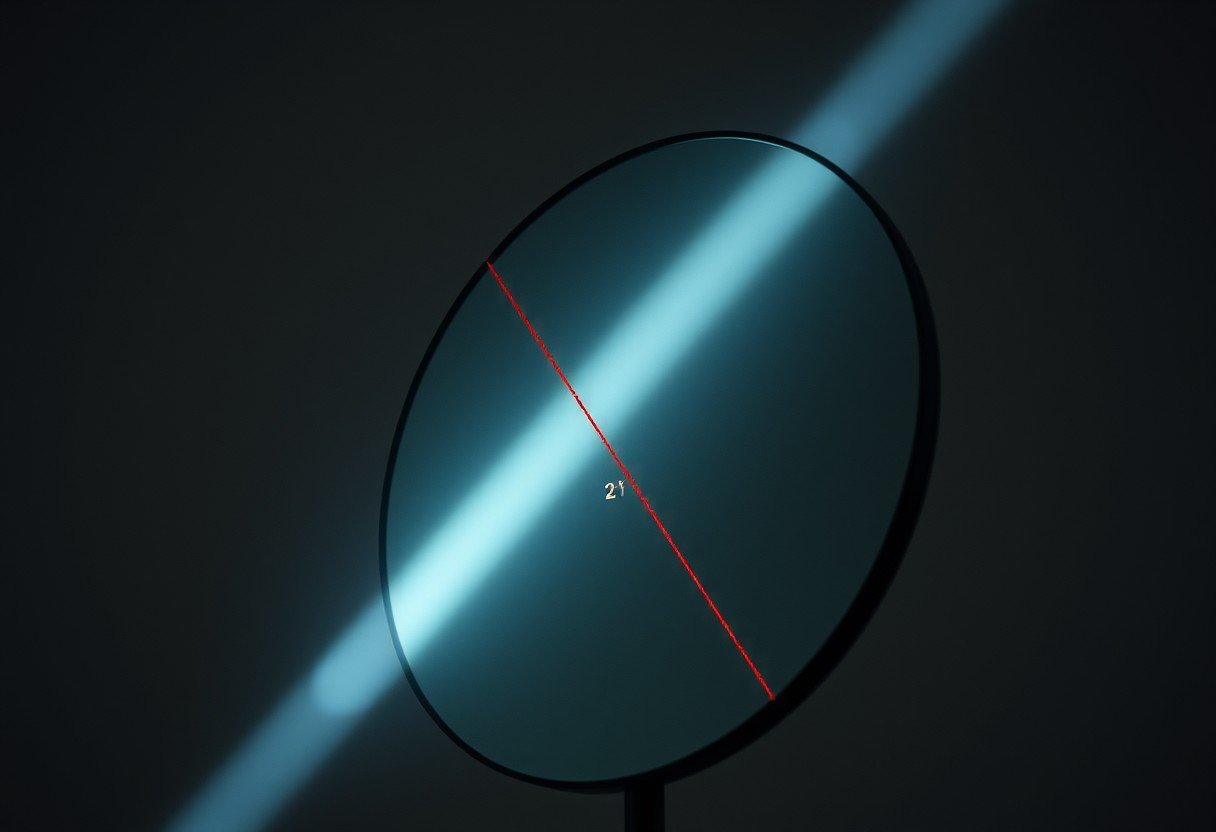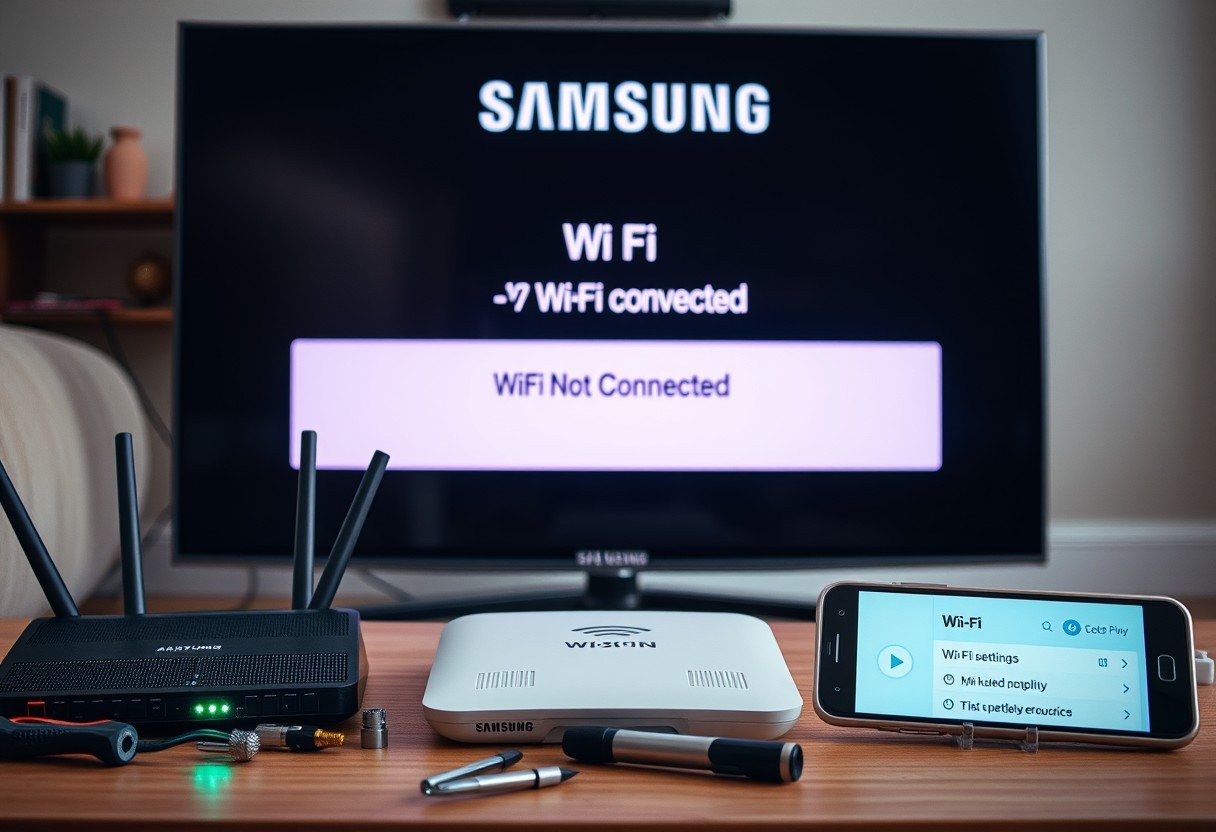When light hits a mirror, it bounces off in a very predictable way. This behavior is governed by a simple rule in physics called the law of reflection. Understanding how the incoming angle of light relates to its outgoing angle is key to knowing how mirrors work, from the one in your bathroom to the giant ones in space telescopes. This principle helps us control light for everything from taking photos to driving safely.
What is the Law of Reflection?
The law of reflection is a fundamental principle in optics that describes how light behaves when it encounters a reflective surface. It is elegantly simple and consists of two main parts.
The first and most important part states that the angle of the incoming light ray is equal to the angle of the reflected light ray. This creates a perfect symmetry in how light bounces off a surface.
To understand this, we must introduce an imaginary line called the normal. The normal is a line drawn perpendicular (at a 90-degree angle) to the surface of the mirror at the exact point where the light ray hits. Both the incoming and outgoing angles are measured from this line, not from the surface of the mirror itself. Therefore, the law of reflection can be stated as: the angle of incidence is equal to the angle of reflection (Θ1 = Θ2).
How to Measure the Angles of Incidence and Reflection
Measuring these angles correctly is crucial for understanding and applying the law of reflection. The process is straightforward once you identify the key components.
First, you have the angle of incidence, often labeled as Θ1. This is the angle formed between the incoming light ray and the normal line. It is not the angle between the light ray and the mirror’s surface, which is a common mistake.
Next is the angle of reflection, labeled as Θ2. This is the angle between the reflected, or outgoing, light ray and that same normal line. According to the law of reflection, these two angles will always be identical. If the light comes in at 30 degrees to the normal, it will leave at 30 degrees to the normal.
| Angle of Incidence (Θ1) | Angle of Reflection (Θ2) |
|---|---|
| 15° | 15° |
| 45° | 45° |
| 70° | 70° |
Does the Type of Mirror Change the Rule?
A common question is whether the shape of a mirror, such as flat, concave, or convex, alters this fundamental rule. The law of reflection holds true for all types of mirrors, regardless of their shape.
The rule is applied locally, at the exact point where each individual light ray strikes the surface. For a curved mirror, you can imagine a tiny flat surface at that specific point. The normal line is then drawn perpendicular to that tiny flat section.
While the law itself doesn’t change, the curvature of the mirror does change the overall direction of the reflected light rays. A convex mirror, which curves outwards, will cause parallel light rays to spread out or diverge. A concave mirror, which curves inwards, will cause parallel light rays to converge at a single focal point. This is why these mirrors can magnify objects or create wider fields of view, but the reflection of each light ray still perfectly follows the Θ1 = Θ2 rule.
Key Factors that Influence Light Reflection
While the angle of incidence is the primary factor determining the angle of reflection, other properties can influence the quality and nature of the reflection you see. Understanding these can help you appreciate why some surfaces create clear images while others don’t.
Several elements come into play:
- Surface Texture: A very smooth and polished surface, like a glass mirror, produces a clear image called a specular reflection. A rough surface, like a piece of paper, causes the light to scatter in many directions, which is known as diffuse reflection.
- Material Properties: The material of the surface determines how much light is reflected versus how much is absorbed. A silvered mirror reflects over 95% of visible light, while a piece of black construction paper absorbs most of it.
- Wavelength of Light: Some materials may reflect certain colors (wavelengths) of light more than others, which is why objects have color.
Even with a rough surface that creates a diffuse reflection, each individual light ray still obeys the law of reflection. The scattering happens because the surface is made of countless tiny surfaces all pointing in different directions, each with its own normal line.
Practical Applications of Reflection in Daily Life
The principles of light reflection are not just for physics classrooms; they are at work all around us every day. From simple tools to advanced technology, controlling the reflection of light is essential.
One of the most common applications is the rearview mirror in a car. It is carefully angled to allow the driver to see traffic behind them without turning their head, enhancing safety. The side-view mirrors on cars are often convex to provide a wider field of view, even though this makes objects appear farther away.
In science and technology, mirrors are critical components of telescopes, microscopes, cameras, and lasers. The Hubble Space Telescope uses a massive concave mirror to collect faint light from distant galaxies, allowing astronomers to see deep into the universe. In photography, reflectors are used to bounce light onto a subject to eliminate shadows and create better-lit images.
A Simple Experiment to See the Law in Action
You don’t need a high-tech lab to prove the law of reflection. You can easily validate it at home with a few simple items. This hands-on approach is a great way to see the principles of optics in action.
To get started, you will need a small flat mirror, a laser pointer or a small flashlight, a piece of paper, a pencil, and a protractor.
- Place the piece of paper on a flat surface and stand the mirror up vertically along a line you draw on the paper.
- Draw a normal line perpendicular to the mirror line on your paper.
- Shine the laser pointer at the mirror so the beam hits exactly where the normal line meets the mirror. The beam coming from the laser is your incident ray.
- You will see a reflected beam on the other side of the normal. Use your pencil to mark two points along the incident ray and two points along the reflected ray.
- Remove the mirror and use a ruler to draw straight lines for both rays. Now, use your protractor to measure the angle of incidence (between the incident ray and the normal) and the angle of reflection (between the reflected ray and the normal).
If you perform the experiment carefully, you will find that the two angles are equal, providing a clear and simple validation of the law of reflection.
Frequently Asked Questions
What is the relationship between the angle of incidence and the angle of reflection?
The relationship is very simple: they are always equal. The law of reflection states that the angle at which light hits a surface (the angle of incidence) is identical to the angle at which it bounces off (the angle of reflection).
What is the normal in light reflection?
The normal is an imaginary line drawn at a 90-degree angle to the surface of the mirror at the point where the light ray hits. It is used as a reference line from which the angles of incidence and reflection are measured.
If a light ray hits a mirror at 45 degrees, what is the reflected angle?
If the angle of incidence (the angle between the incoming ray and the normal) is 45 degrees, then the reflected angle will also be 45 degrees. The outgoing ray will make a 45-degree angle with the normal on the opposite side.
Does a rough surface follow the law of reflection?
Yes, it does. Although a rough surface scatters light in many directions (diffuse reflection), each individual light ray still obeys the law of reflection. The scattering occurs because the rough surface has millions of tiny surfaces oriented in different directions.
Why is understanding light reflection important?
Understanding reflection is crucial for many fields, including optics, engineering, photography, and even architecture. It allows us to design instruments like telescopes and cameras, ensure safety with car mirrors, and control lighting in buildings and homes.









Leave a Comment